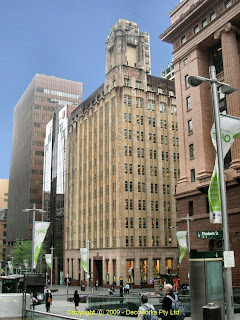Commonwealth Bank - Town Hall

Since 1911 the Commonwealth Bank Town Hall site at 546 George Street in Sydney was a retail outlet for furnishing retailer Morley Johnsons. An additional two floors were added to the building around 1938 and Art Deco syled fluting added to the facade. When Morley Johnsons closed their doors they sold the building to the Commonwealth Bank in 1964. The Commonwealth Bank has maintained a branch there ever since. Facade detail Before (circa 1930s) and after the remodelling of the facade (circa 1960s) Sources: Commonwealth Bank Archives










